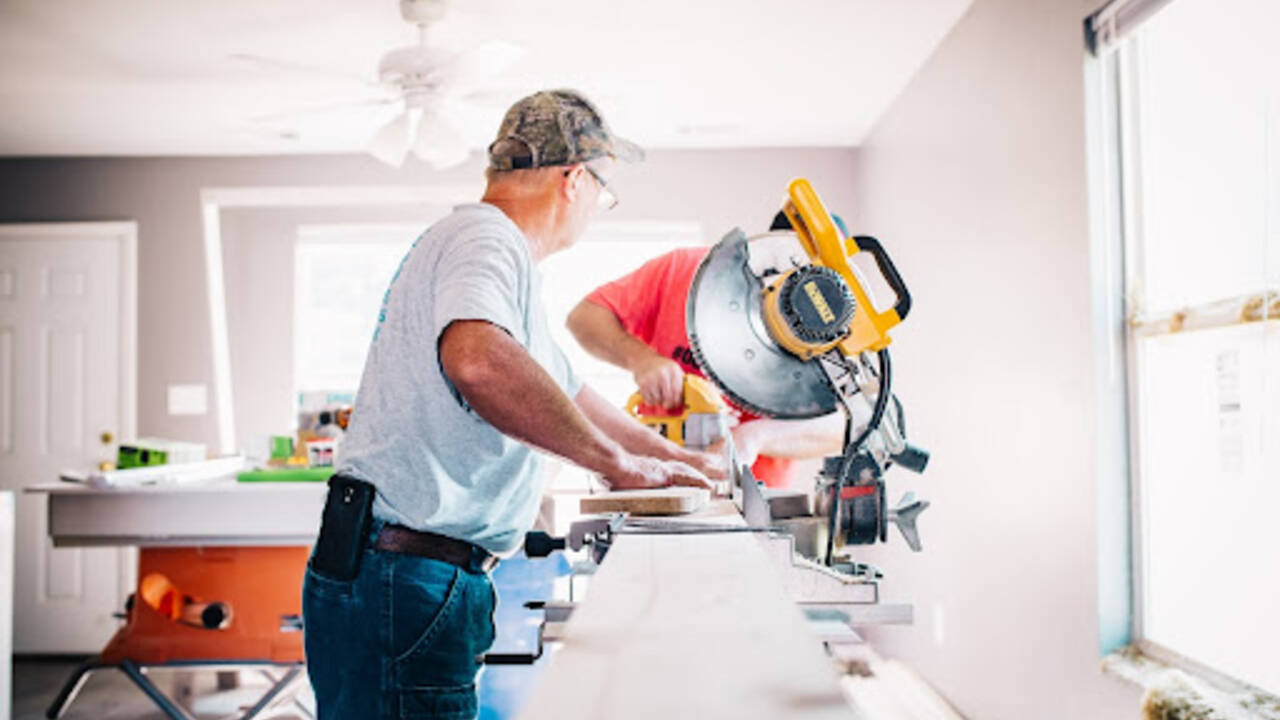Building a new home can be stressful! When building a new home, there are a lot of decisions that a homeowner has to make. A lot of those decisions start before the building process even begins and often revolve around materials. There are a lot of materials to consider, so let’s take a look at some great options for your new home.
Building Construction Types & Materials
Starting at the beginning, you’ll have to decide between different construction types. Though there are several building construction types and materials, the four most common structurally are wood, masonry, steel, and concrete.
Wood
Wood construction is a popular choice due to its ease in construction, affordability, no need for heavy machinery, and versatility. Additionally, labor to work with wood is widely available compared to more specialized materials. Disadvantages to wood include being more vulnerable to severe weather, pests, fire, and water damage.
Masonry
Utilizing stone construction such as stone or cinder blocks provide great structural stability, resistance to fire, water damage, and pest in addition to a longer lifespan, affordability, and improvements to resale value. Of course, there are disadvantages to masonry as well such as the need for specialized labor, equipment, transportation, and material sourcing.
Steel
Steel is a type of building construction that is often used in commercial applications, but it has benefits in residential construction as well. For instance, steel framing and construction provide greater durability than wood, versatility in larger designs, and is eco-friendly due to the recyclability of steel. One of the disadvantages to steel includes less energy efficiency as it acts as a stellar thermal conductor which is not good for keeping the cool air or heat in depending on the season.
Concrete
Concrete building construction has similar benefits to masonry, though concrete eliminates some of the disadvantages of masonry construction. Concrete is widely locally available making transportation and material sourcing much easier. However, one of the disadvantages to concrete is that it can only be constructed in certain weather conditions and is heavy compared to its strength.
Insulations and Sealants to Choose From
Insulations and sealants are vital to keeping your home protected from the elements and keeping energy efficiency.
EPS vs. XPS
EPS, which stands for Expanded Polystyrene, is manufactured by fusing spherical beads with heat and pressure. XPS, which stands for Extruded Polystyrene, differs in manufacturing as it is a continuous extrusion process. When looking at EPS vs. XPS, other than how it is made, the main difference is that EPS provides a higher insulation value over time, but does retain moisture, while XPS has a higher insulation value immediately and degrades over time but is highly moisture resistant.
Sealants
Applying sealant such as fluid-applied flashing is a great way to keep the elements out of your new home. It should be applied around doors, windows, and any entry points to the outdoors. Fluid-applied flashing is great for this because it adheres to any material. Applying sealant is a must for your new home.
Eco-Friendly Materials
Many new home builders and even those remodeling now choose to go with more eco-friendly materials. Here is a look at a few of the most popular eco-friendly materials.
Bamboo
Bamboo is an eco-friendly material that can be used in finishings, flooring, or even structurally. It has a beautiful finish and is strong which makes it a great eco-friendly choice for a new home.
Cork
Cork is a great eco-friendly material for flooring as it absorbs impact well, provides thermal insulation, and has wonderful sound absorption. It is harvested from the bark of cork oak trees without killing the trees so that it can be harvested again. Its production is why it is so eco-friendly.
Recycled Materials
Recycled materials provide not only cost-savings but are good for the environment, too. These can be anything from recycled wood to steel. There are a lot of recycled materials used in other structures previously that can be used again in your new home or remodel.
Consider Different House Foundation Types
Different house foundation types should be a consideration when building a new home. There are several variations, but three house foundation types are a few of the most popular including a concrete slab, basements, and a crawlspace. Homes with a concrete slab are placed directly on the slab, whereas with basements and crawl spaces, there is an open space below the ground of the home.
Types of Windows
Once the structure of your new home is moving along, it will be time to make a decision on the types of windows you want to have in your home. These can range from the top of line hurricane-grade windows to custom decorative stained glass windows. You’ll also have to decide if you want standard sizing or custom sizes though if you want anything custom, you’ll have to plan that before construction.
Contemplate These Materials For Your New Home
As you can see, there are a lot of decisions to make when building your new home. These materials can also be a consideration for extensive home remodeling or home additions. No matter your plans, home building materials are big decisions and research is a great first step!


Comments(0)